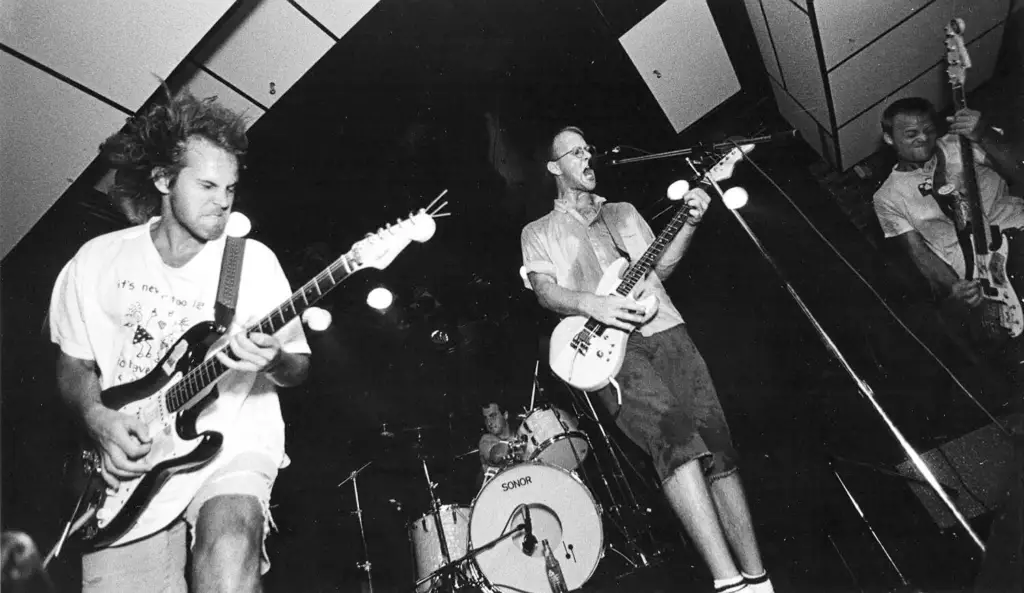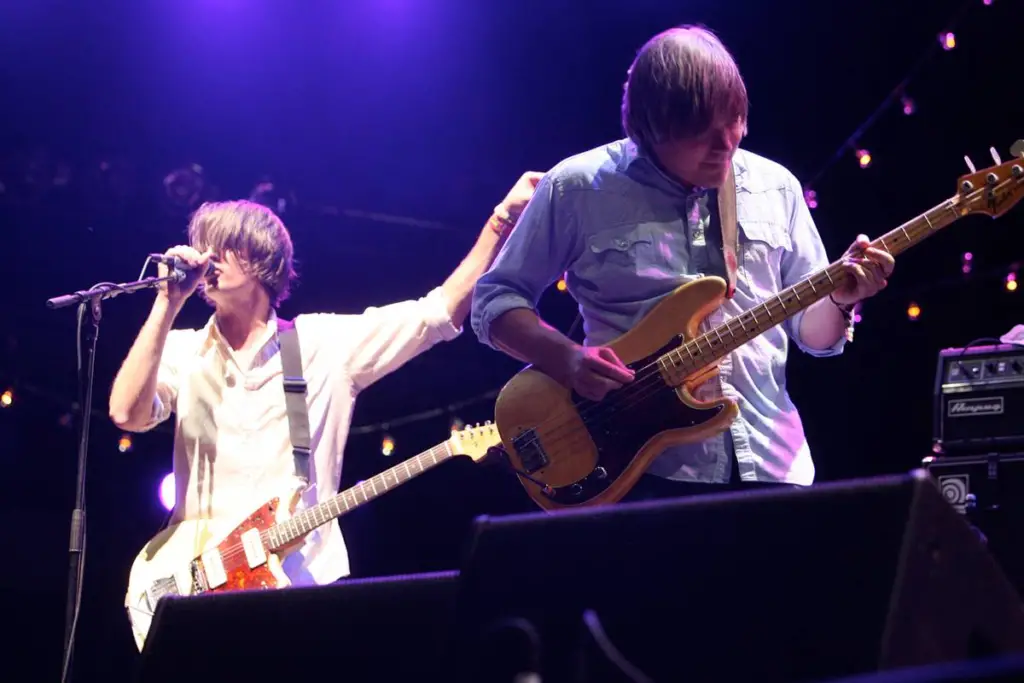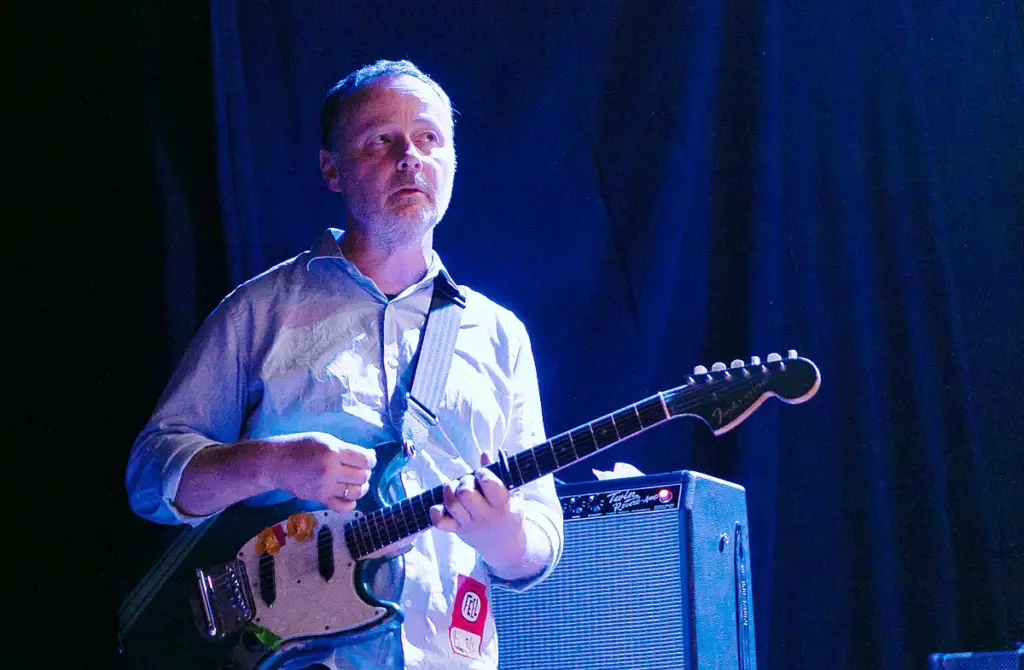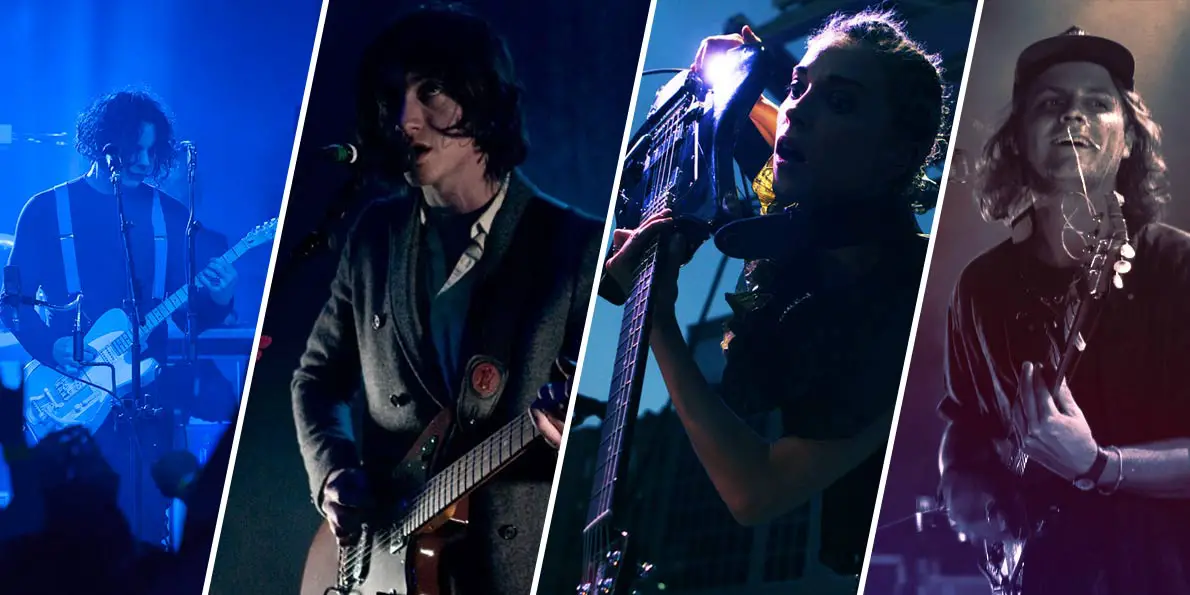The Best Indie Rock Guitarists Of All Time Ranked
In the 1980s, the use of the term “indie” (or “indie pop”) started to shift from its reference to recording companies to describe the style of music produced on punk and post-punk labels. During the 1990s, grunge and punk revival bands in the US and Britpop bands in the UK broke into the mainstream, and the term “alternative” lost its original counter-cultural meaning. The term “indie rock” became associated with the bands and genres that remained dedicated to their independent status. By the end of the 1990s, indie rock developed several subgenres and related styles, including lo-fi, noise pop, emo, slowcore, post-rock, and math rock. In the 2000s, changes in the music industry and the growing importance of the internet enabled a new wave of indie rock bands to achieve mainstream success, leading to questions about its meaningfulness as a term. Here are all of the best Indie Rock Guitarists of all time ranked. Here are all the best Indie Rock Guitarists of all time ranked.
See more: The Best Metal Bassists Of All Time Ranked
See more: The Best Metal Drummers Of All Time Ranked
20. J Mascis

“Probably indie rock’s premier guitar god, J Mascis excels at grabbing all of the best classic rock guitar signifiers and making them his own. It makes his band’s name, Dinosaur Jr., pretty perfect—too bad it was arrived at accidentally (the original Dinosaur sued). Over the Massachusetts-based band’s first three albums for indie labels and a half-dozen more for majors and independents, Mascis reclaims the best gestures of rock’s past; wah’ed rhythm parts, wailing solos, blaring chords, massive riffs, punishing volume, the works—all of it spun into a final product that sounds irresistibly modern and underground.”
19. Lou Barlow

“Lou Barlow may not solo as wildly as his former employer (no, where he really bested J Mascis was in writing self-probing lyrics), but he matches him step for step in composing guitar parts that serve a song. Check the dynamite, chordal hook that jumps out of the speakers as soon as you put on the first track of Sebadoh III, “The Freed Pig,” and follows Barlow’s vocals as a sympathetic partner until devolving into a big blast toward the song’s end.”
18. D. Boon

“All three of San Pedro, Calif.’s Minutemen were master musicians but the band’s strongest element was singer and guitarist D. Boon. Over four albums and six EPs for SST, using punk as a template, Boon demonstrates everything he could possibly think to do with six strings. At times he closely mirrors Mike Watt’s dexterous basslines while accentuating them with crashing chords before tossing in a brief, meandering solo.”
17. Dean Ween

“Their obnoxious sense of humor tends to overshadow it, but Dean and Gene Ween—of the Pennsylvania-based Ween—are accomplished musicians, particularly Dean, a.k.a. Mickey Melchiondo. In a 2007 interview with The Onion A.V. Club, Dean outlined the difference between the two (now former) partners’ approaches to their instruments: “I’m definitely more of a guitar player, whereas Aaron writes songs on a guitar, but it’s a means to an end with him.” This is borne out by Ween live, as Melchiondo shreds on every song that calls for it and brilliantly anchors the band on the rest.”
16. Stephen Malkmus

“When Pavement toured in 2010, Stephen Malkmus switched guitars between every song; alternating between a goldtop Gibson Les Paul with soapbar pickups and a black Fender Stratocaster with a tortoise-shell pickguard. In the 1999 concert footage on the Pavement DVD Slow Century, Malkmus can be seen employing the same technique; before almost every single song he switches from one guitar to the other. Exactly why he does this is perhaps best left between him and his guitar tech, but one suspects it’s just so he can have a freshly tuned guitar on every song, which is just so Malkmus.”
15. Ash Bowie and Dave Brylawski

“Polvo’s two frontmen and guitarists Ash Bowie and Dave Brylawski built most of their songs around shimmering chords and stream-of-consciousness riffs; whistling Polvo on the bus would make someone look pretty strange. They sound as if someone stared into space and imagined the strangest guitar-based song possible and then the band tackled – and generally nailed – the unenviable task of performing it.”
14. Thurston Moore and Lee Renaldo

“For good or ill, they devised a great deal of how indie rock guitar playing sounds and is executed. If you were an indie rock band in the late ‘80s and early ‘90s, you had to make a conscious effort not to sound like Sonic Youth. They were pioneers in so many signifiers of indie guitar; alternate tunings, heavily altered guitars, intentional dissonance, ending songs with a noise jam, etc. In fact, the NYC-based band is so known for Thurston Moore and Lee Renaldo’s methods that it’s difficult to get past all this and just listen to the music, which was frequently exceptional.”
13. Neil Hagerty

“Neil Hagerty had his work cut out for him in Royal Trux, as the San Francisco-based band was officially comprised of only him and his girlfriend, Jennifer Herrema, who just sang. Luckily, Hagerty was up for the job; over nine albums for Drag City and two for Virgin, he piles sublime guitar over haphazard bass and drums borrowed from wherever.”
12. Judah Bauer

“Jon Spencer may take the lion’s share of the credit (and therefore the blame, but that’s another matter) for Jon Spencer Blues Explosion, but if the band began and ended with his calculatedly cartoonish antics it never would have gotten off the ground. His two partners in crime—drummer Russell Simins and guitarist Judah Bauer—were what made the NYC-based JSBX a marquee act, particularly Bauer. Here we had a young guitarist who’d seemingly absorbed every note Keith Richards played in the late ‘60s and early ‘70s and could effortlessly spit it all back out on a battered Telecaster, playing like a man well beyond his years.”
11. Steve Albini

“The word that comes to mind listening to Steve Albini play guitar is control. First off, you know that due to his legendary skill as an engineer and just a gearhead, his guitar sounds exactly the way he wants it to, both live and on record. Second, Albini doesn’t merely play a note, he places it precisely where he means to. Listen to “A Minute” off the Chicago-based Shellac’s At Action Park for a demonstration of this.”
10. Eric Bachmann and Eric Johnson

“The division of guitar duties in Chapel Hill’s Archers Of Loaf looks pretty standard on paper; one Eric plays rhythm, the other lead. Singer, guitarist Eric Bachmann anchors his songs with alternately trudging and barreling chords while Eric Johnson fingers stay in the upper register of the fretboard the entire song, but not because he’s slathering everything with Claptonesque leads. Johnson uses the guitar the way a lot of people use keyboards; finding phrases and triads for each passage of a song that keep the listener hooked—this little trick is central to the band’s sound.”
9. Mitch Mitchell and Tobin Sprout

“The thing about playing guitar in Guided By Voices is you’re going to be doing it more or less constantly, since Robert Pollard writes dozens of songs a day and doesn’t really have any way to accompany himself other than a surrounding rock band. Mitch Mitchell and Tobin Sprout—not the only men to ever play guitar in GBV but surely the most definitive—play as if they know all too well that quantity is the dominant property here.”
8. Tim Gane

“London, England’s Stereolab were led by a guitarist, but listening to them you’d never guess that. Over ten albums for independent labels (though often backed by Elektra), Gane generally makes his guitar playing just one element in Stereolab’s wash of droning keyboards, bass, motorik drums and girls singing in perfect harmony or describing their progressive politics in French. Not that anyone can blame him; after devising a formula this awesome, few sensible musicians would be looking for an opportunity to cut a gnarly solo.”
7. Annie Clark

“St. Vincent’s frontwoman Annie Clark started playing guitar when she was 12 years old. She honed her skills in the high school jazz band and continued studying for three years at Berklee College of Music before dropping out. She’s got the technical skills, but that’s not what makes her such a special talent. For Annie, the guitar is just a tool she uses to express herself, and her creative vision is what sets her apart.”
6. Joey Santiago and Black Francis

“Listening to the Pixies today, it’s hard to figure why they were so widely praised as such a tuneful band, what with Frank Black screaming and snarling like a beast all the time, hitting a melody only when Kim Deal forcefully drags him over to the chorus. Their secret is Black and Joey Santiago’s ongoing guitar duel, which sees them stacking hooks on top of each other. Check Surfer Rosa’s “Broken Face” for a prime example of this; the two ram together crashing chords and a wailing bent note on what passes for the verse before meeting up for a footrace of a riff on the chorus.”
5. Brian Causey

“In the ‘90s there was no shortage of bands touring college towns hawking some sort of modern update of surf rock and rockabilly. Long-term this gimmick proved unsustainable, but one band hailing from this movement has demonstrated remarkable staying power; Man or Astro-man? On its initial albums for Estrus Records, the band mixed dark surf instrumental jams—anchored by Brian Causey, aka Star Crunch, whose guitar playing veers between tight control of a melody line and barreling abuse of his reverb coils—with clever vocal samples from old movies.”
4. Jack White

“He was obviously the whole point of the White Stripes, even if Meg was the coolest thing about the Detroit-based band. The first thing that jumps out on any White Stripes album is Jack’s yelping lead vocals and the second is his guitar playing; an always confident mixture of pounding rhythms and sliding leads. At their best, the White Stripes recalled the best of British invasion rock like the early Stones and the Yardbirds but so what, right? A million bands do that.”
3. David Pajo

“Louisville’s Slint followed a formula common to bands of its era—in that its songs started quietly and then got dynamically louder. It’s a trick date-stamped to a certain time period, sure, but it can be argued that no band made you feel you’d travelled as far from a song’s unassuming intro to a high-volume climax as Slint, and a lot of this is owed to the work of guitarist Dave Pajo.”
2. Mary Timony

“Though she is now a part of grrrl rock band Wild Flag, the perfect visual representation of Mary Timony’s guitar playing comes in the early video for her former group Helium’s “XXX.” As a very whammy-bar-warped guitar solo plays, Timony stands on an escalator and struggles with the broken strings of a goldtop Gibson Les Paul. It’s an exaggeration, sure, but a lot of her playing has this same gone, woozy quality.”
1. Bob Mould

“One of the many strange gems on the SST label roster in the ‘80s, Husker Du was supposedly a punk band, but singer, guitarist Bob Mould stretched them way beyond the borders of Saint Paul. Part of this was his thoughtful, relatable songwriting but just as essential was his guitar playing; it was more jangly and crammed full of hooks than his contemporaries’ work. He also made frequent use of the decidedly un-punk Roland Jazz Chorus amp, the built-in analog chorus effect of which gave his playing an otherworldly yet still abrasive sheen.”

